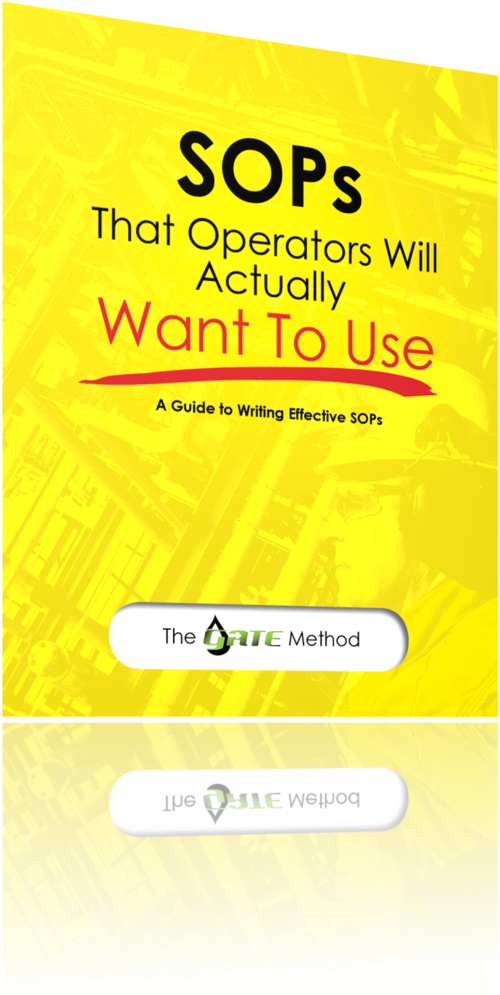SOPs That Operators Will Actually Want To Use: A Guide To Writing Effective SOPs
WHAT STANDARD OPERATING PROCEDURES IN THE OIL INDUSTRY SHOULD BE
In the oil and gas industry, SOPs are frequently developed late in the project when construction is well underway – too late to impact the design. They may be used for little other than operator training and following startup they often end up on a shelf collecting dust.
Contrast this with the airline industry, where SOP use has dramatically decreased the frequency and impact of accidents. That industry has created a culture and expectation of following procedures. They use SOPs for normal events – takeoff and landings – and in response to emergencies. Learnings are effectively incorporated into their SOPs.
It is hard to imagine ever having such devotion to SOPs in the oil and gas industry, but it is something we should strive for. Effective SOPs that are diligently used by operators may be the driver for the next step change in process safety in the industry.
But this cannot reasonably be accomplished unless we start writing procedures that are more user-friendly.
We must start writing SOPs that the operators will actually want to use.
WHAT IS!
SOPs are important for the safe and effective operation of industrial plants, including oil and gas facilities. But SOPs are frequently developed late in the project, after the design is completed and construction is well underway. And they may be used for little other than operator training. Following startup, they often end up on a shelf collecting dust. Used this way, SOPs have little influence on either the design or the operation of the facility.
WHAT COULD BE!
SOPs can be so much more. They can be both an integral part of the design process and a catalyst for culture change in the industry. As part of the design process, there are several advantages to the SOPs:
If generated early enough, they can be a powerful tool for finding and correcting operability issues in the design.
They allow us to design the facility to be operated, rather than having to figure out how to operate a facility after it has been built.
If generated early and in coordination with the control systems design effort, they provide guidance for the HMI design. They allow us to design the HMI for the way the facility will be operated.
Effective SOPs can dramatically simplify the development of final commissioning and initial startup procedures.
CHANGING SAFETY CULTURE
In January 2009, US Airways Flight 1549 piloted by Captain Chesley “Sully” Sullenberger and First Officer Jeffery Skiles hit a flock of geese. The plane lost power. Skiles reached for the SOPs. From the moment of the impact until the plane landed in the Hudson River, he diligently and rapidly applied procedures in his attempts to restart the engines.
The airline industry has dramatically decreased the frequency and impact of accidents by creating a culture of following procedures, typically in the form of checklists. They do this for normal events – takeoff and landings – and in response to emergencies. Airline pilots and other personnel have learned to rely on SOPs in all types of operating situations.
It is hard to imagine every having such devotion to SOPs in the oil and gas industry, but it is something we should strive for. Effective SOPs that are diligently used by operators may be the driver for the next step change in process safety in the industry. But this cannot reasonably be accomplished unless we start writing procedures that are more user-friendly - procedures that the operators will actually want to use.
INTRODUCTION TO THE GATE SOP PROCESS
This book describes the GATE process for generating Standard Operating Procedures (SOPs) and other similar procedure documents. The process is based on over a decade of learning from writing SOPs for projects as well as extensive literature study.
The key feature of the process is phased development. It is relatively common practice in the industry to generate detailed procedures straight-away. There are several reasons for using a phased approach. Detailed procedures are difficult and time consuming to write and they are difficult to review. Because they are difficult to review, hidden errors embedded in detailed procedures may not be found. And when the errors are found, it will often be difficult and time consuming to correct them.
Conversely, High-level and Mid-level procedures are easy to review and easy to change. The important decisions are made at the Mid-level. Detailed procedures are then easier to write and contain fewer errors.
The most important reason for using a phased approach is that it allows us to begin writing the procedures very early in the design process. High-level procedures can be developed from the PFDs.
Another important feature of the phased approach is the opportunity to perform a procedure HAZOP at the appropriate stage: Mid-level. Mid-level Procedures contain enough information to identify the significant hazards.
LIKE WHAT YOU'RE READING...
If you would like to continue reading about GATE's method to writing effective SOPs, you can obtain a copy of the book SOPs That Operators Will Actually Want To Use: A Guide to Writing Effective SOPs from Amazon. Now available in paperback.
All proceeds go towards the GATE Scholarship fund for future engineers.
SOPS THAT OPERATORS WILL ACTUALLY WANT TO USE: A GUIDE TO WRITING EFFECTIVE SOPS
$15.00
By Howard Duhon
Would you rather a free copy of our SOPs That Operators Actually Want to Use? Just click the button, fill out the form and then you will be redirected to the eBook.




